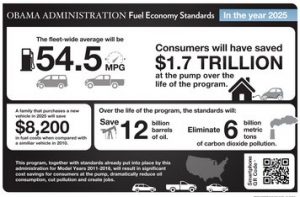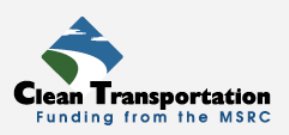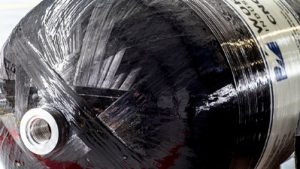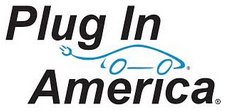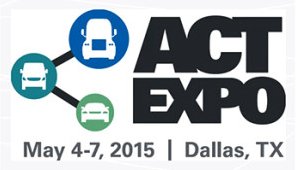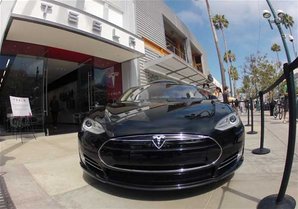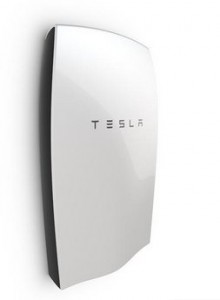by Jon LeSage, editor and publisher, Green Auto Market
Here’s my take on the 10 most significant and interesting occurrences during the past week…….
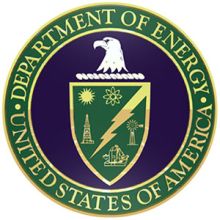 DOE’s Vehicle Technology Program: Funding for the US Department of Energy’s (DOE’s) advanced vehicle technology program may be reauthorized in Washington. U.S. Senators Gary Peters and Debbie Stabenow (D-Michigan) and Sen. Lamar Alexander (R-Tenn.) introduced a bill that would reauthorize the Vehicle Technology Program’s budget at $314 million in the next fiscal year; it would also include a 4% annual increase after that through 2020. That DOE program has been running without congressional reauthorization for the past seven years; in that program, DOE works with researchers on alternative fuel vehicle projects. The new funding program would add R&D on vehicle-to-vehicle and vehicle-to-infrastructure to its roster.
DOE’s Vehicle Technology Program: Funding for the US Department of Energy’s (DOE’s) advanced vehicle technology program may be reauthorized in Washington. U.S. Senators Gary Peters and Debbie Stabenow (D-Michigan) and Sen. Lamar Alexander (R-Tenn.) introduced a bill that would reauthorize the Vehicle Technology Program’s budget at $314 million in the next fiscal year; it would also include a 4% annual increase after that through 2020. That DOE program has been running without congressional reauthorization for the past seven years; in that program, DOE works with researchers on alternative fuel vehicle projects. The new funding program would add R&D on vehicle-to-vehicle and vehicle-to-infrastructure to its roster.- EV taxes and incentives: On July 1, Oregon will begin testing a first-in-the-nation model that will be of interest to states attempting to add electric vehicles (EVs) and hybrids to its tax revenues. Up to 5,000 volunteers can sign up to drive with devices that collect data on how much they have driven and where; test project volunteers will agree to pay 1.5 cents for each mile traveled on Oregon roads instead of the tax now added when filling up on gasoline at the pump. The state thinks it would help pay for road and bridge projects during a time when tax-based revenue from gasoline taxes has been declining across the country during an era of more fuel efficient vehicles and purchases of hybrids and EVs. In other news, the state of Connecticut is now offering a cash rebate up to $3,000 for those purchasing EVs. It’s part of the state’s efforts to bring more charging stations to Connecticut and to promote the use of EVs. Along with that, the state is now offering auto dealers bonuses for selling EVs and hydrogen fuel cell vehicles.
- Rio Honda College wins hydrogen grant: Professor John Frala announced that Rio Hondo College has been awarded with three-year grant funding to develop a training model for stationary and mobile fuel cell technicians. National Science Foundation is funding the first-ever hydrogen program that will support training and development of hydrogen fuel cell vehicle technicians. Frala also said that Rio Hondo College, based in Whittier, Calif., is the first college to now offer a bachelor of science degree in Automotive within the state of California; that was announced last week by Gov. Jerry Brown, Frala said.
- Analysis of used green vehicles: Used green vehicles – including compressed natural gas (CNG) vehicles, hybrids, electric vehicles, flex-fuel vehicles, and propane autogas vehicles – are seeing increasing volume and activity at auctions. Green Fleet published a comprehensive report on what fleet managers and remarketing experts are seeing in used vehicle values out in the US market. Bobit Business Media, which publishes Green Fleet, also announced it will host what it describes as the largest Green Ride & Drive Event in the US; that will take place during Fleet Technology Expo (which was previously called Green Fleet Conference and Expo), which is taking place Aug. 24-26, 2015 at the convention center in Long Beach, Calif.
- Uber testing out driverless cars and EVs: Uber, which is considered to be the giant of the new ridesharing/ride-hailing transportation segment, is testing out a driverless car in Pittsburgh with the label, “Uber Advanced Technologies Center” painted across its side and rotating sensors on top of the car. It’s in partnership with the autonomous vehicle research center at Carnegie Mellon University and will be researching mapping, safety, and autonomous systems, according to the company. In March, the company announced that it’s trying out 25 battery electric vehicles as part of its offerings in Chicago. That test program is in partnership with BYD, where drivers and passengers are trying out the BYD e6 electric car. In other significant news, the New York Times reported yesterday that US airports are becoming more willing to try out allowing Uber and other ridesharing companies (such as Lyft) to have access to the airports – as a fee revenue source and because consumers are demanding access for Uber to drop them off and pick them up at major airports. Taxi and livery companies have been fighting ridesharing companies from having access to their markets without paying medallion and trip fees that they’ve had to pay all these years.
- $15M in California grants: The California Energy Commission has approved nearly $15 million in state grants for alternative fuel vehicles. Transportation Power, Inc., won nearly $9 million for an electric garbage truck, an advanced battery-electric truck and a heavy-duty electric yard tractor in three different projects; nearly $3 million is going to Motiv Power Systems, Inc., to demonstrate an electric refuse and loader truck in the Sacramento region. North American Repower won $3 million to demonstrate six armored security trucks that were converted form diesel to plug-in hybrid that also runs on renewable natural gas.
- Audi adding more electric drive: Audi will expand its electric vehicle offerings next year with an electric-powered Q1 crossover coming out next year. An electric sporty SUV will be launched in 2018 and an electric version of its flagship Q8 SUV will roll out in 2019, the company said. It’s part of building “a solid foundation” for Audi’s growth plan as the world’s top global premium brand in vehicle sales.
- IMPCO added to GM’s CNG vehicles: IMPCO Automotive was awarded General Motors’ bi-fuel Chevrolet Silverado 2500HD Cab Chassis for model year 2016, 2017, and 2018. The new Cab Chassis program expands IMPCO Automotive’s existing OEM working class vehicle programs for GM, which includes Chevrolet Silverado 2500HD and GMC Sierra 2500HD pickups with multiple Cab and bed configurations, and dedicated CNG full-size Chevrolet Express and GMC Savana vans.
- Kansas City competes for EV crown: Kansas City Power & Light (KCP&L), which provides electricity to Kansas City, Mo., and Kansas City, Kan., is moving full steam ahead on installing 1,001 electric vehicle (EV) charging stations to solve the range anxiety dilemma and bring more EVs to the area. “If you build it, they will come,” Chuck Caisley, KCP&L vice president of marketing and public affairs, said. Clean Charge Network, announced in January, initially will consist of 1,001 240-volt stations and 15 direct current fast-charging stations. About 150 of the charging stations have so far been installed, and the utility plans to finish the job this year. The program has gained automakers as sponsors, including Nissan.
- Propane paratransit buses: SMART, a regional public transportation provider in southeast Michigan, has become one of the five largest propane autogas powered paratransit fleets in the US by adding 61 new Connector paratransit propane-powered buses. SMART expects the propane buses to reduce emissions, lower fuel and maintenance costs, and extend the life of the vehicle. SMART researched various alternative fuels, and made that decision based on the fuel being more affordable and readily available and for resolving “the stringent and complicated emission control issues experienced with the diesel-fueled paratransit buses,” according to SMART’s propane-autogas vehicle supplier, ROUSH CleanTech.

